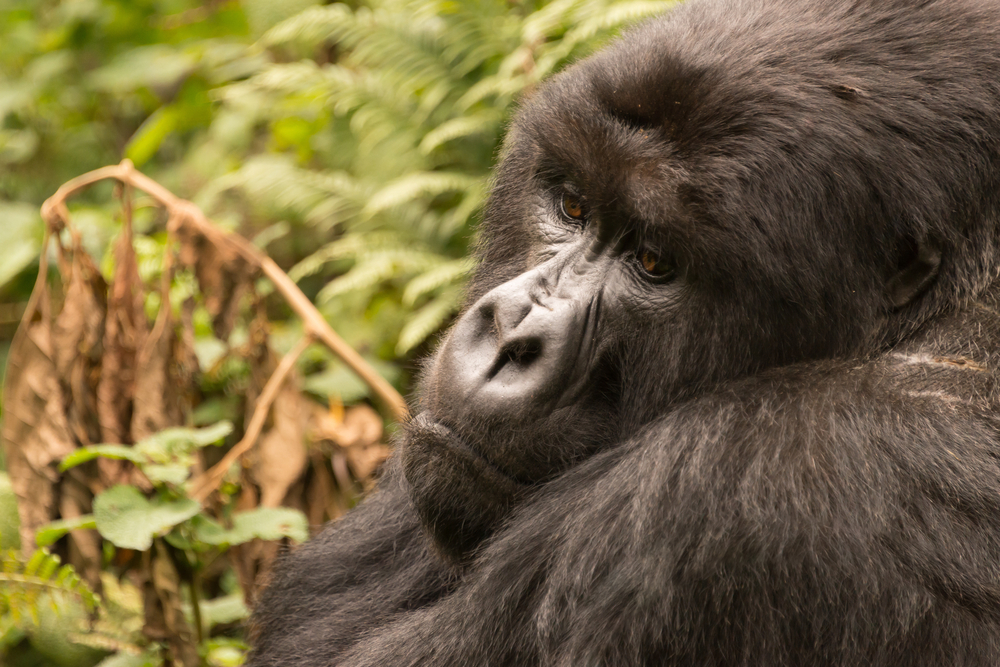
The world’s top conservationists this week warned that the eastern gorilla, the planets biggest primate, is on the very brink of disappearing forever. With extinction staring right into its anthropomorphic eyes, the species has been added to the organisation’s Red List.
At its congress in Hawaii, the International Union for the Conservation of Nature (IUCN) revealed that the global population of eastern gorillas, has shrunk by over 70 percent in the last 20 years, leaving fewer than 5,000 individuals living in the wild, spread across the Democratic Republic of Congo, northwest Rwanda and southwest Uganda.
The news means that four of the six great ape species are now listed as critically endangered, prompting Dr M Sanjanyan, vice-president at Conservation International, to comment that: ‘We are driving our closest living relatives to extinction, which is sickening.’

In happier news, the IUCN Conference decided that giant pandas, long an icon for threatened species, are no longer critically endangered, and their status on the red list has been downgraded to ‘vulnerable’, even though there are fewer giant pandas living in the wild than there are eastern gorillas.
Pandas have apparently benefited from efforts by the Chinese government to protect forests. The future isn’t entirely bright, however, with climate change lurking as a threat, with more than a third of the bamboo habitat that sustains them set to disappear by the end of the century.
‘This reclassification recognises decades of successful conservation efforts led by the Chinese government and demonstrates that investment in the conservation of iconic species like giant pandas does pay off – and benefits our society as well as species,’ Lo Sze Ping, chief executive of the China office of WWF, told The Guardian.
‘Everyone should celebrate this achievement, but pandas remain scattered and vulnerable, and much of their habitat is threatened by poorly planned infrastructure projects. And remember: there are still only 1,864 left in the wild.’
The conference also proposed many motions for protecting wildlife—such as restricting the trade of pangolin, the world’s most trafficked animal—and called for governments to keep protected areas free of harmful activity, such as oil drilling.
Another international powwow will happen Later this month, when government officials meet in Johannesburg, South Africa, to discuss the legal trade in endangered species and debate the fate of the current international ban on trading ivory.
[geoip-content not_country=”CA”]
ON THE APP
Animalogic: Pandas
Pandas have seemingly done everything in their power to go extinct, should we just let them?
 Want to watch Animalogic: Pandas for free right now? Subscribe to the Love Nature streaming app and start your 30-day free trial of the best on-demand natural history documentaries out there. [/geoip-content]
Want to watch Animalogic: Pandas for free right now? Subscribe to the Love Nature streaming app and start your 30-day free trial of the best on-demand natural history documentaries out there. [/geoip-content]
